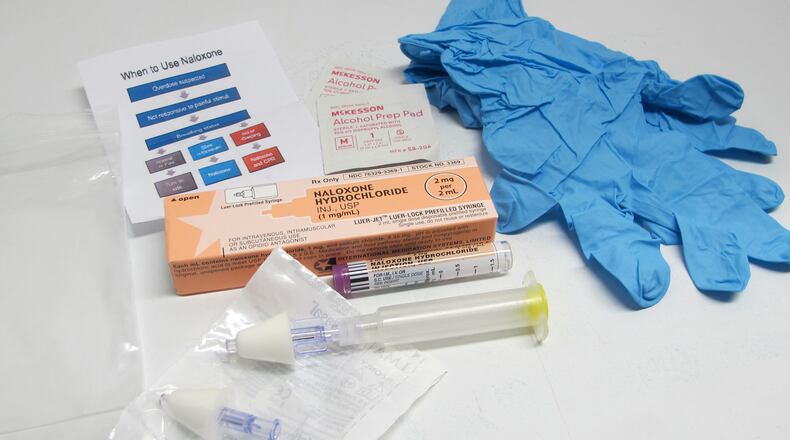RELATED: Mental health board announces $3.6 million opiate plan
The board has 10 months to use the money. Rasmus said he is not sure the grant will be renewed, so the board is discussing putting a levy on the ballot, likely next year, to sustain the $3.6 million opiate plan instituted last year.
“You could start services up, and if you don’t have sustainability funds to continue it, you lose the services over time,” Rasmus said.
Congress approved providing up to $970 million to states last year to battle the heroin epidemic over two years. Ohio will receive $26 million; Butler County, with a high number of overdoses, qualified for a large share, according to Rasmus.
As of May there have been 905 overdoses in the county. In 2016, 189 people died from accidental overdoses.
READ MORE: Quick response teams save lives
Quick response teams are working in Hamilton and Middletown, and Fairfield is discussing starting one. The teams, which include either a police officer or a paramedic and an addiction specialist, visit people who have recently overdosed and offer to help them get clean.
Jennifer Mason with the Hamilton team said the grant was good news.
“Fort Hamilton Hospital has been actively addressing the heroin epidemic in the community through our Fort’s Opiate Recovery Taskforce (F.O.R.T.) Golden Ticket program. While the program has been successful, the heroin problem is so big that we need more people and resources to address,” Mason said.
Rasmus said they will add a person to the Mental Health Mobile Crisis Team to be their designated quick response person, using a portion of the new money.
To keep this program going and to address their larger plan, Rasmus said they will ask the county commissioners’ permission to ask voters for money for addiction services next year. There are two mental health levies, but those can’t be used for addiction services.
RELATED: Mental health and addiction boards merge
“We are still very much engaged in trying to get an integrated levy on the ballot,” he said. “We’re hoping to be successful sooner rather than later because obviously that’s the piece for sustainability.”
Commissioner T.C. Rogers said he needs to see how successful the opiate plan has been before he could back asking taxpayers for more money.
“We realize there is a tremendous problem and we’re scrambling just like every other city and state in the country. But you can’t just say more money… if there is a proven benefit, then people are more apt to vote for it,” Rogers said.
County Administrator Charlie Young said there will likely be two county-wide levies on the ballot next year if the MHARS board convinces the commissioners to put a ballot question on. The Board of Developmental Disabilities has indicated they will go to the voters too. The last time they were on the ballot was 2004.
RELATED: DD board offers buyouts to save money
Young, like Rogers, said the MHARS board has some work to do convincing the commissioners taxes are needed to fight the epidemic.
“Both the federal and the state government levels there has been a lot of talk about providing funding for those,” Young said. “I think it’s important that we look to those federal and state funding sources before we look to local sources.”
Rasmus, when he announced the $3.6 million opiate plan last year, promised he would seek other funding sources first. This federal grant fits into the plan, however, he said it isn’t a permanent solution.
“We were able to identify about $600,000 already to support the plan, and this money will also be in support of that plan,” Rasmus said. “But when you begin to do the math, we’ve got a $3.6 million plan, we’ve identified about $600,000, this is another $660,000 but three-quarters of that money is short-term, potentially one-time money.”
Commissioner Don Dixon also said he needs to see the MHARS board plan demonstrate a chance for success.
“This is a very complicated issue that nobody really has been able to find a plan that’s foolproof or 100 percent successful. You’re not ever going to have one of those,” Dixon said. “But there are limits to the amount of money you can throw at it too.”
Opiate Epidemic By the Numbers
$970 million in 21st Century Cures Act dollars
$26 million of that for Ohio
$660,000 for Butler County
$3.6 million cost of Butler County Opiate Business Plan
905 overdoses in Butler County in 2017
About the Author
